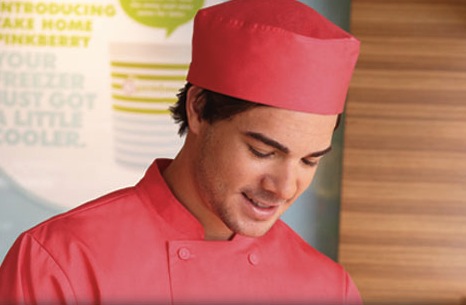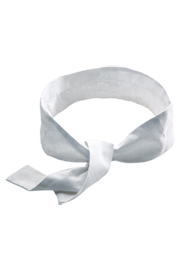
If you’ve never spent a lot of time in a restaurant kitchen, you may think that the culinary uniform is outdated, stuffy, and pointless, but you could not be more wrong.
While the look of the traditional uniform is, in fact, stark and severe, the usefulness of it is not. Each piece serves a specific purpose, and every detail from the design to the fabric is not to be overlooked.
If you’ve ever wondered why you need to wear a hat, or just what the point of that neckerchief is, read on.
Jacket
This is perhaps one of the most important parts of your uniform, and also your biggest investment, but if you’re new to the restaurant industry, you may not know why you need it.
First, let’s take a look at how most chef’s jackets are made; they’re not just plain old cotton jackets. Made of double thick cotton, the fabric is designed with safety in mind. While cooking in a home kitchen is relatively safe and even therapeutic, a restaurant kitchen is a different story. You’re working with commercial equipment, heavy tools, and extra hot surroundings. It’s very easy to bump into someone and have hot liquid splattered onto you, and lifting a steamer lid just a second too soon because you’re trying to get dinner service started on time could mean you’re assaulted with steam. It’s also not unheard of to get a little too close to the burner when testing your house made pasta sauce, and if you were wearing street clothes, you could easily catch your sleeve on fire. A good quality chef’s coat won’t let that happen.
While a chef’s jacket isn’t magic, the fabric it’s made of can help protect you from severe injuries. Modern technology has made it possible to create fabrics that not only protect you from burns and stains, but also keep you cool and comfortable, because as you probably know, a professional kitchen can get hot. Cool Vent Technology from Chef Work’s makes you forget how hot you are so that you can do what you do best: Cook.
You think safety is the only reason to wear a chef’s jacket? Not quite. In addition to protecting you from the perils of the professional kitchen, a chef’s jacket makes you look professional. Usually in bright white, it lets those around you know that you take your job seriously, and that you’re not just a short order cook in a roadside diner, but a chef.
A classic chef’s coat is designed so that if you spill something on yourself, you can keep going. The double breasted style with two rows of buttons down the front allows you to cover stains by simply switching the top and bottom layers should you have to head out to the dining room for any reason.
If you are new to the industry, you may not think you need a chef’s coat, but after a few hot nights, and maybe a burn or two, you’ll change your mind quickly.
Apron
You may think that all aprons are created equally; after all, it’s just a piece of fabric tied around your waist or neck to protect you from stains. Why would you need a professional apron when you could just pick up a cheap apron from a discount store?
In a professional kitchen, an apron serves several functions. There is, of course, the stain protection factor, which is the prime reason to have an apron. But an apron made of high quality materials protects better. Think about it for a second. You’ve spent a lot of money on your chef’s jacket. It’s nice and bright white, and you’re in the kitchen for the majority of your day. You are bound to spill something on yourself. Do you want to rely on a thin, flimsy piece of fabric to protect your jacket from grease, wine, and other messy spills? Or would you rather feel confident that if you spill something on your apron, you’re certain that the stain won’t bleed through and leave a grease stain on your jacket? A high quality apron provides you that extra security.
In addition, professional aprons often have features that you may not find on a home apron. Heavy duty pockets to keep you most used tools with you at all time mean you can carry a pair of kitchen sheers with you without worrying that it will slice right through the fabric, or worse, your skin.
And, of course, aprons made for professional cooking are made of thick, flame resistant materials. This means that the string tying your apron around your neck won’t catch fire if it gets near a flame (although you still want to prevent this, of course!).
Hat
Perhaps one of the first things you may think of when you picture a professional chef is the iconic, tall white hat.
A hat does more that just pull your look together. It protects both you and your customer. It protects your customer, of course, by keeping hair out of their food. Even short hair can shed without you realizing it, and a single hair can ruin your night, and even your reputation. A hat that covers completely is the answer.
A good hat protects the chef by keeping long hair inside the hat. This means long hair won’t get caught in a piece of equipment or door, and it won’t accidentally get too close to a burner and catch fire. Tucking your hair neatly in a hat is an easy fix for all of these problems.
Neckerchief
 It may seem like adding more pieces of fabric to your uniform when you’re in a steamy environment seems counterintuitive, but the neckerchief actually helps keep you cool.
It may seem like adding more pieces of fabric to your uniform when you’re in a steamy environment seems counterintuitive, but the neckerchief actually helps keep you cool.
Tied around your neck, it protects your skin from sweat, and it keeps sweat from dripping, which you definitely don’t want in the food. It can also be untied and used to wipe your brow. In an air-conditioned kitchen, a neckerchief may not be necessary, but in some high-end establishments, it may be required simply because it looks professional and completes the uniform.
Shoes
When you’re working on your feet for 12 hours a day or more, you can’t expect to last long in street shoes. In addition, you have to expect that you could drop a heavy pot or sharp tool, and spilling boiling hot liquid on your feet is not out of the question either.
For this reason, you need footwear that is comfortable, but also sturdy and durable. There are many styles of quality footwear, some made specifically for chefs.
Conclusion
As you can see, there are more reasons to wear each piece of a chef’s uniform than just to please the head chef. Everything from the design to the fabric is used for a reason, and that reason usually keeps you from getting burned or otherwise injured.
Of course, a bright white chef’s uniform also sets the stage for professionalism in the business. In an industry where you don’t need an education or training to get a job, or even to succeed, you’ll meet plenty of people that don’t take the work seriously. You know, however, that when you see someone proudly wearing that crisp, stark white jacket and hat, you’re seeing someone that is serious about cooking and their career.


